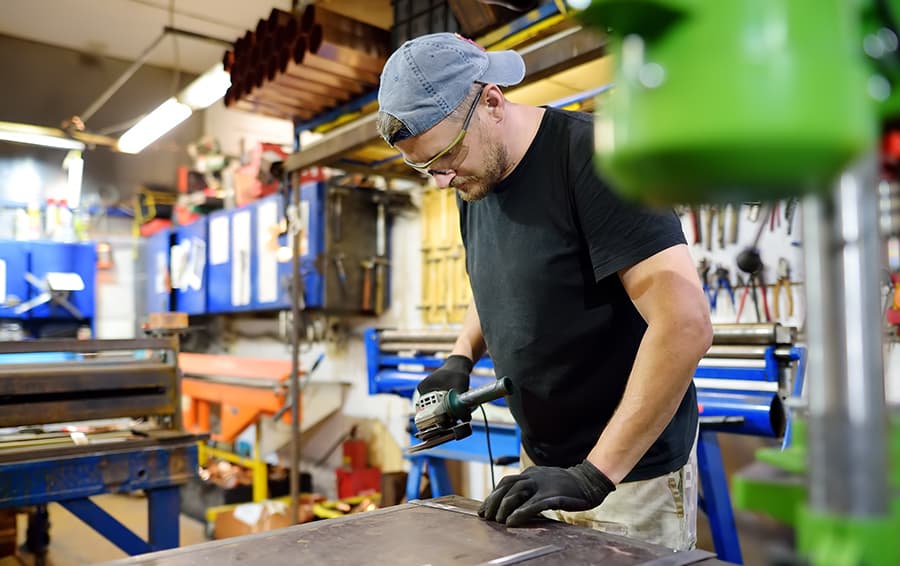The past few decades and the rise of globalisation and offshoring meant original equipment manufacturers (OEMs) could benefit from lower costs and greater choice. But that pattern has shifted, and many now recognise that an over-reliance on imports can leave them vulnerable to shortages.
The last 18 months have seen a renewed interest in reshoring for UK manufacturers, and how to shore up global supply chains has become one of the industry's most hotly debated topics.
Reshoring offers enormous opportunities for mid-market industrial companies, but it's difficult to gauge when to bring manufacturing closer to home.
What is reshoring?
Reshoring, also known as onshoring, means bringing manufacturing and other production processes, such as fabrication, back to the country where the OEM is based. This can be done by reshoring operations, building new local production facilities, or strategically building a network of local suppliers.
There has been renewed interest in reshoring in the last 18 months. Several factors are behind this. Avoiding the fallout of geopolitical events is one of the biggest drivers – alongside rising labour costs in previously more cost-efficient locations, a need to reduce air and shipping miles to meet ESG requirements, and consumer preference to 'buy local'.
But it's also an opportunity to support local innovation and skills development, develop shared resources and expertise, and ensure products and components meet quality standards more closely. In short, it's a way to improve supplier performance and relationships and to help future-proof the manufacturer itself.
When to reshore?
Even before COVID-19, some UK and EU manufacturers had already started bringing production home after offshoring it in the Far East. Increasingly, they're recognising the value of localised supply chains to drive up quality standards, develop skills, support their local economy, and reduce mileage and lead times.
Thanks to manufacturing automation and ERP, it can also be cost-effective. But what circumstances could be the tipping point for a mid-market manufacturer to turn to reshoring?
- Your supplier costs have risen - component and material shortages have led to fluctuating prices, making imports less cost-effective, particularly with rising wages in Far East economies. Consider the added shipping costs, lead times, returns, and import duties, especially post-Brexit. Instead of relying on instinct, an ERP solution with comprehensive purchasing visibility to monitor changes and evaluate whether sourcing from local suppliers is more viable.
- Suppliers are embracing automation over cost savings – global labour costs are increasing but remain lower than in the UK and EU. The tight job market post-COVID and demand for specialist skills have raised wages and created a skills gap, hampering reshoring efforts. However, many SME manufacturers are automating routine processes to improve efficiency, provide business intelligence, address labour shortages, and cut costs. If suppliers adopt these strategies, a manufacturer could benefit from their efficiencies instead of seeking overseas solutions.
- Over-reliance on a handful of suppliers – lockdowns in China during COVID-19 led to widespread disruption and highlighted the vulnerability of global supply chains. While such circumstances are rare, it was a reminder that dependency on a handful of key suppliers or countries can lead to critical shortages. An ERP solution provides visibility in your supply chain so you can then take action to reduce the impact of future disruption.
- Workers lack the right skills – traditionally, OEMs have offshored production to the Far East due to lower costs in manufacturing and labour, as well as a broader supplier base and higher margins. This concept is dropping as manufacturers move to increase the control of their supply chain, and technology enables increased efficiencies in-country alongside higher costs to produce and import, lowering potential benefits.
- Customers’ demands – reshoring is often driven by customer demand for shorter supply chains. Local manufacturing offers improved quality, reduced environmental impact, and regional economic benefits. It also enhances transparency, aligning with consumer interest in product origin.
Reaping the benefits
Reshoring offers UK and EU manufacturers a great chance to become trusted, long-term suppliers for major OEMs. It promises not just a healthy order book but also fosters collaboration, innovation, and access to skills and resources.
Technology should play a significant role in supporting this transition, and the right ERP solution can give small manufacturers the control and understanding they require to facilitate reshoring. The accessibility of productive ERP and automation solutions for small manufacturers is improving as local, focused providers improve their cloud offerings and make them easier to adopt.
Steve Fearon is President, Northern Europe, at mid-market ERP solution provider,Forterro.
Steve Fearon is President, Northern Europe, at mid-market ERP solution provider, Forterro.


